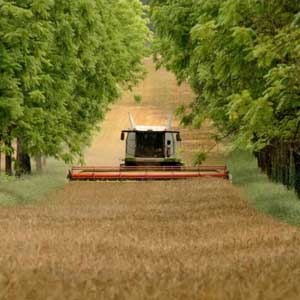For Curious Minds 🧠
The following benchmarks are sourced from the Regenerative Agriculture Book by Richard Perkins (2019)
| Business Type | Minimum Land Use | Investment | Revenue | Net | ROI | Time Period |
Water Use |
|---|---|---|---|---|---|---|---|
| Microgreens | 40 m2 | €4000 | €71000 | €49000 | 1225.00% | 2 Months | 8.35 m3 |
| Mushroom Cultivation | 75 m2 | €17000 | €55000 | €44000 | 258.82% | 1 year | 24.99 m3 |
| Tree Nursery | 305 m2 | €9000 | €75000 | €54000 | 600.00% | 2-3 Years | 49 m3 |
| Market Garden | 2405 m2 | €28000 | €52000 | €46000 | 164.29% | 2-3 months | 412.8 m3 |
| Tree Crops | 17000 m2 | €28000 | €75000 | €65000 | 232.14% | 3-4 years | 36 m3 |
| Pastured Broilers (Chickens) | 24664 m2 | €24000 | €74000 | €52000 | 212.50% | 3 months | 85.28 m3 |
| Pastured Layers (Chickens) | 48000 m2 | €11000 | €109000 | €56000 | 509.09% | 3 months | 143.5 m3 |
| Forest Raised Pigs | 60000 m2 | €13000 | €68000 | €49000 | 384.62% | 10 months | 600.4 m3 |
| Pastured Turkeys | 82500 m2 | €19000 | €79000 | €52000 | 273.68% | 2 months | 50.745 m3 |
| Pastured Veal | 140000 m2 | €22000 | €82000 | €42000 | 190.91% | 9 months | 370 m3 |
| Pastured Micro-Dairy | 250000 m2 | €46000 | €76000 | €49000 | 106.52% | 1 year | 728 m3 |
| Pastured Beef | 550000 m2 | €82000 | €44000 | ** | 2 years | 1263 m3 | |
| Pastured Lamb | 600000 m2 | €34000 | €112000 | €45000 | 132.35% | 1 year | 513.4 m3 |






